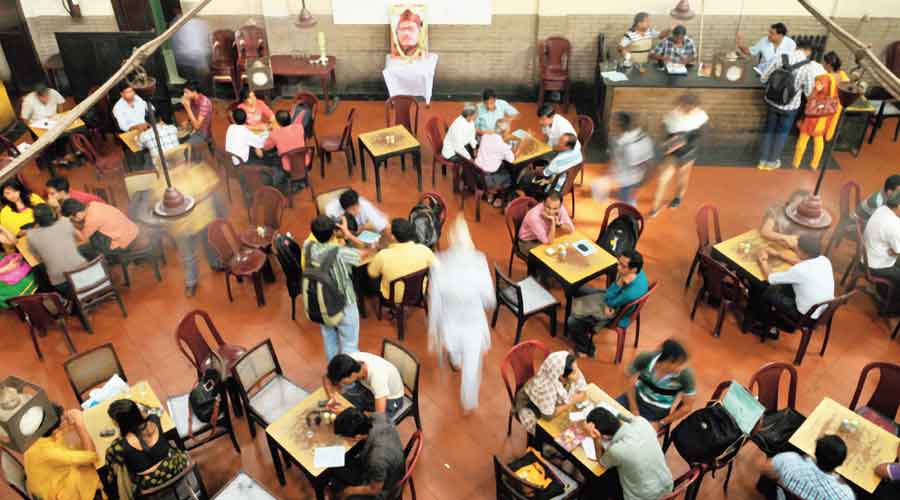When Apu of Apur Sansar applies for the job of a schoolteacher in his first hunt for employment in the city, he is rejected for being overqualified.
Just about two years before the release of the film in 1959, a young Soumitra, fresh from the portals of Calcutta University, had applied for the job of a schoolteacher at Beniapukur Vidyapith. He met with rejection almost on identical grounds.
The founder headmaster of the school, Manindra Kumar Ghosh, had realised that a school was not the stage that would match the applicant’s calibre. Soumitra Chatterjee needed a bigger stage.
Tagore scholar and Manindra Kumar’s son Nityapriya Ghosh, who spent countless hours over endless cups of infusion on College Street with Soumitra, shared memories of his time with “dear Pulu”.
“Pulu did not complete MA and had to look for a job. He had applied for the job of a teacher at a school whose founding headmaster was my father Manindra Kumar Ghosh. Father realised during the interview that Soumitra, given his caliber and versatility, could hardly keep himself confined to a school. He deserved a bigger stage and exactly that is what happened,” Nityapriya told The Telegraph.
The Tagore scholar, along with Soumitra, was part of a group at Indian Coffee House on College Street that called itself the “Last Matric”. They called themselves so because they were the last batch to write the Matric examination in 1951. It was replaced the next year by the school final examination.
Soumitra was a regular at the adda on Sundays. What did they discuss?
“Although we used to meet to pull a prank on each other, at times Soumitra and Nimalya Acharya would discuss about what was going on in the film fraternity, which had been split into two camps – one in awe of Satyajit Ray and the other Mrinal Sen,” recounted Nityapriya, younger brother of poet Sankha Ghosh.
“Pulu was thin like me. I remember one day he advised me — take rice and catch a sleep in the afternoon if you want to become fat.”
The group met regularly for two years from 1967, a period when Soumitra was at the peak of his career.
He always puffed Gold Flake with the infusion.
At the Coffee House, people would stare at the star but never did they descend on the table occupied by the “Last Matric” — something unconceivable now.
Soumitra’s life did not begin and end with cinema. He remained active in theatre, co-edited a literary journal for 18 years (Ekkhon, 1961-1979, with Nirmalya Acharya), authored a dozen books of poetry and also produced paintings.
“But contrary to popular perception, we never discussed literature, theatre, politics. We went there to relax. The lone aberration was discussions on what were churning in Ray’s camp and Sen’s camp. One day I heard Nirmalya telling him (Soumitra) about Bhuvan Shome, a 1969 film by Mrinal Sen,” said the former student of the erstwhile Presidency College.
Did he ever discuss films with Soumitra? “Hardly. But I had written the story on Teen Bhubaner Pare in English, as told by director Asutosh Bandopadhyay, so Tanuja could understand it,” said Nityapriya, a former secretary of Autumn Annual, a yearly magazine published by the Presidency Alumni Association.
The story of Teen Bhubaner Pare was inspired by a novel by Samaresh Basu. The film, starring Soumitra and Tanuja, was released in 1969.
How would he remember his friend he had met at Calcutta University while pursuing MA in 1955? “I am going to remember him as one je khub jomiye adda dite parto,” said Nityapriya.
Soumitra had enrolled for MA in Bengali and Nityapriya MA in English.











